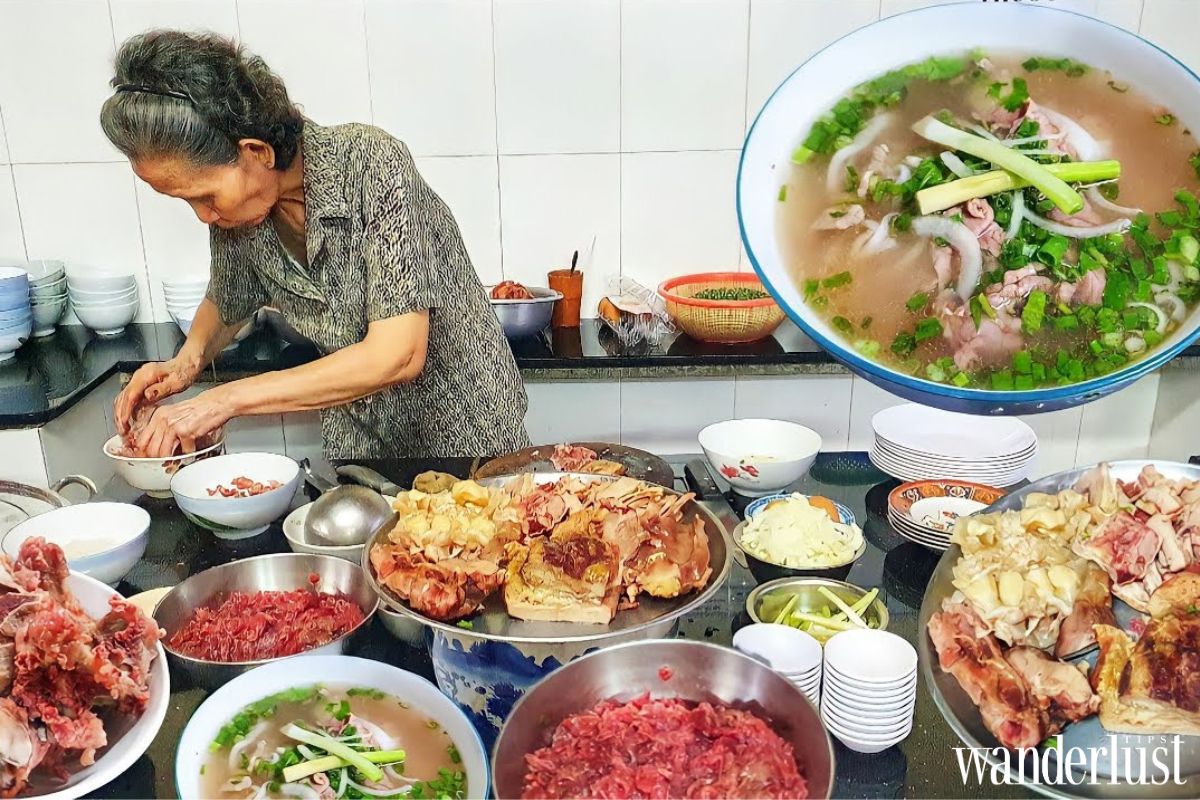The Vietnamese people consider Pho to be their national meal. However, the characteristics of Pho vary based on locale. We explore the top four Saigon Pho restaurants to uncover what makes them so outstanding that “the world culinary guideline” has recognized them.
Pho Chao: A unique fusion of Asian and Western cuisines
This is perhaps the most “unique” Pho restaurant on the Michelin Guide list 2023 of Saigon Pho restaurants and diners. Despite the fact that it was just founded in 2021, Pho Chao has achieved several exceptional achievements in less than three years. Pho Chao, located on Nguyen Cong Tru Street in Binh Thanh district, is well-known for its large number of foreign clients, which is difficult to find in other restaurants. The little shop has succeeded in merging Asian and Western cuisines into Pho while retaining the dish’s innate quintessence. As a result, Pho Chao holds a special position in the hearts of diners, particularly international ones. Furthermore, Pho Chao is well-known for its owner’s kindness and hospitality, thanks to the reputation of Dung Mama (the affectionate term given to Mrs. Bui Thi Dung by foreign tourists). She is also a generous lady, donating a portion of her daily revenues to cancer sufferers.
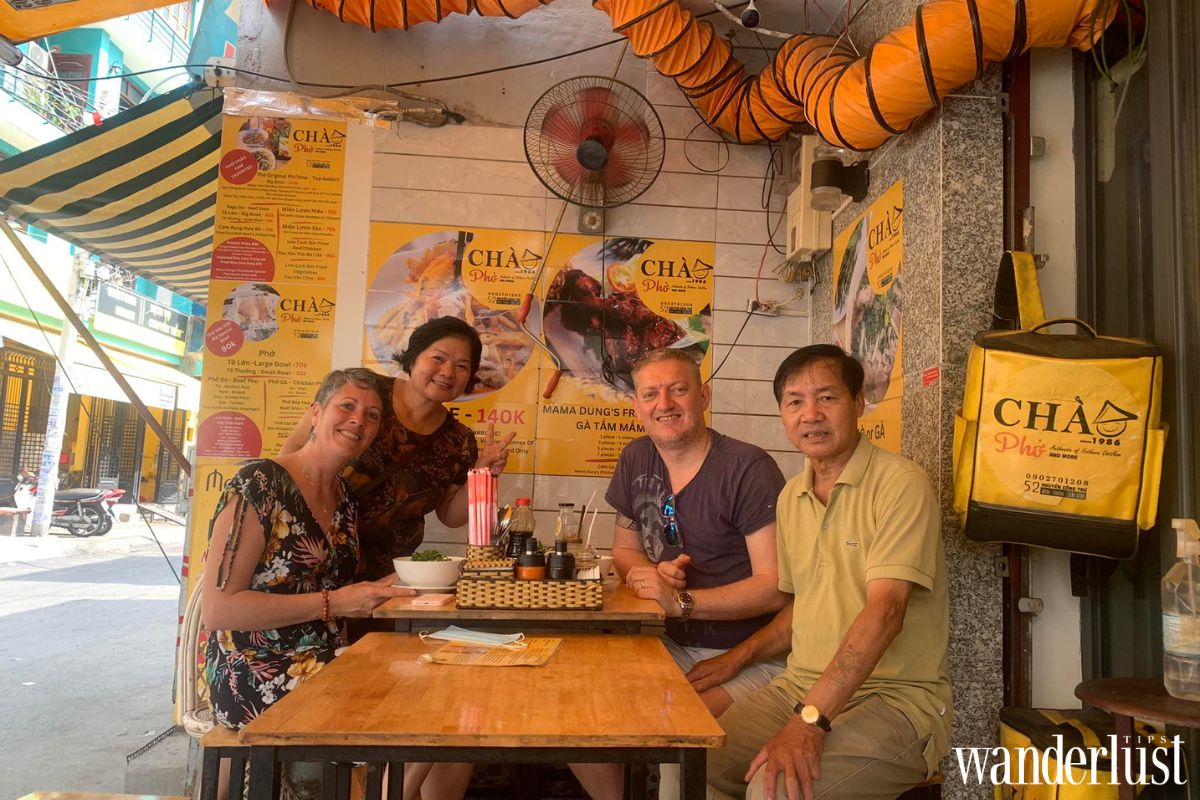
Pho Tine is unquestionably Pho Chao’s signature dish. This is a unique blend of classic Pho and Poutine (a Canadian cuisine consisting of french fries, cheese balls, and beef sauce drizzled on top). The fries and cheese balls stay the same with Pho Tine, but the beef sauce is replaced with a thick noodle soup topped with juicy beef. Because of its uniqueness, it appeared that this variation would spark a lot of debate, but on the contrary, Pho Tine is quite popular with diners and has quickly become the restaurant’s brand mark. Aside from Pho Tine, Mama Dung’s hereditary traditional Pho dishes are also noteworthy. Traditional Pho has a sweet and delicious broth with a Northern flavor, and dishes like fried Pho, chicken noodle soup, fried rice with beef melon, ragu, fried vermicelli, and others are seasoned to appeal to both Vietnamese and Western customers.
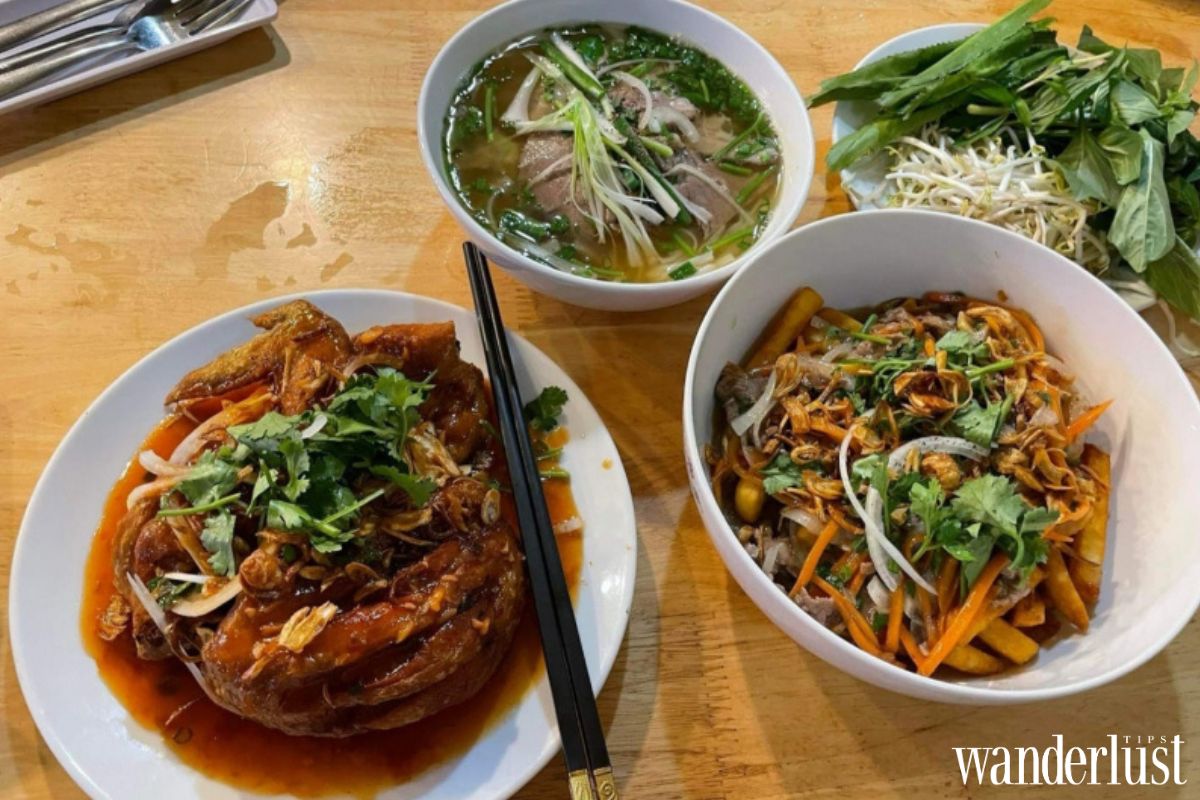
Pho Hoa: A well-known international tourist destination
The range of diners’ ethnicities will astonish you if you visit Pho Hoa. When visiting Saigon, tourists frequently include Pho Hoa in their itinerary. When consumers enter the business, they will see a range of languages from across the world, including those from the United States, Korea, China, and Japan. The name Pho Hoa has an intriguing provenance as well. Derived from the name of a Pho street seller named Hoa, who taught the owner’s family how to cook pho dishes. Since then, the shop has been named Pho Hoa in honor of the man’s generosity. Today, anyone going along the busy Pasteur Street in the center of District 1 will notice the crowded Pho establishment attracting a large number of diners.
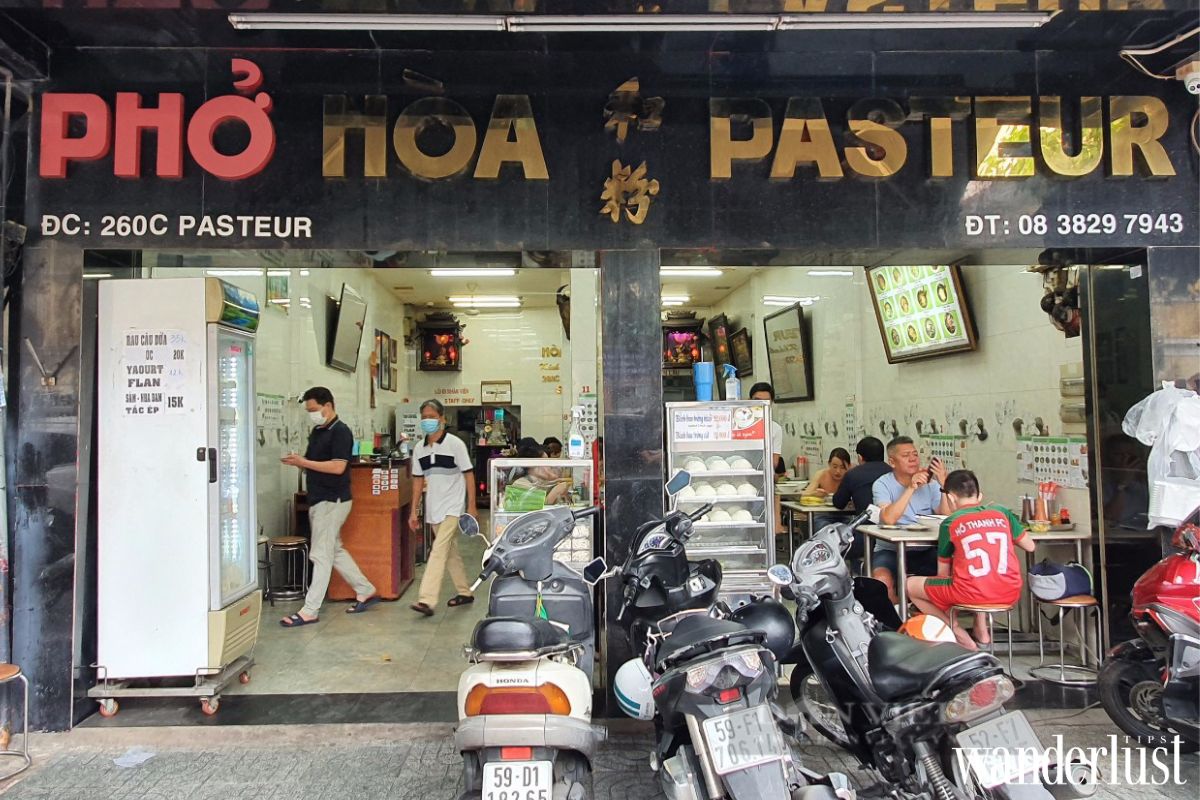
Pho Hoa is prepared in the traditional Southern way. People associate Pho Hoa with a bowl of pho full of meat and rice noodles, with the broth seasoned in the direction of sweetness combined with the fatty taste of the bones that have been cooked for several days. A particular bowl of Pho will include items such as rare, encrusted, bucket, tendon, pellet, vesicle, leaf bag, and so on. This is also a feature of Southern Pho, whereas Northern Pho often only includes noodles with rare meat. In order to promote Vietnamese cuisine to foreign tourists, the shop also sells several Vietnamese side dishes such as spring rolls, pancakes, deep-fried glutinous rice, sesame balls, and so on. Despite the price dispute, considering the brand awareness, the quality of the dishes, and the service system, Pho Hoa is still one of the pho restaurants worth visiting in Saigon.
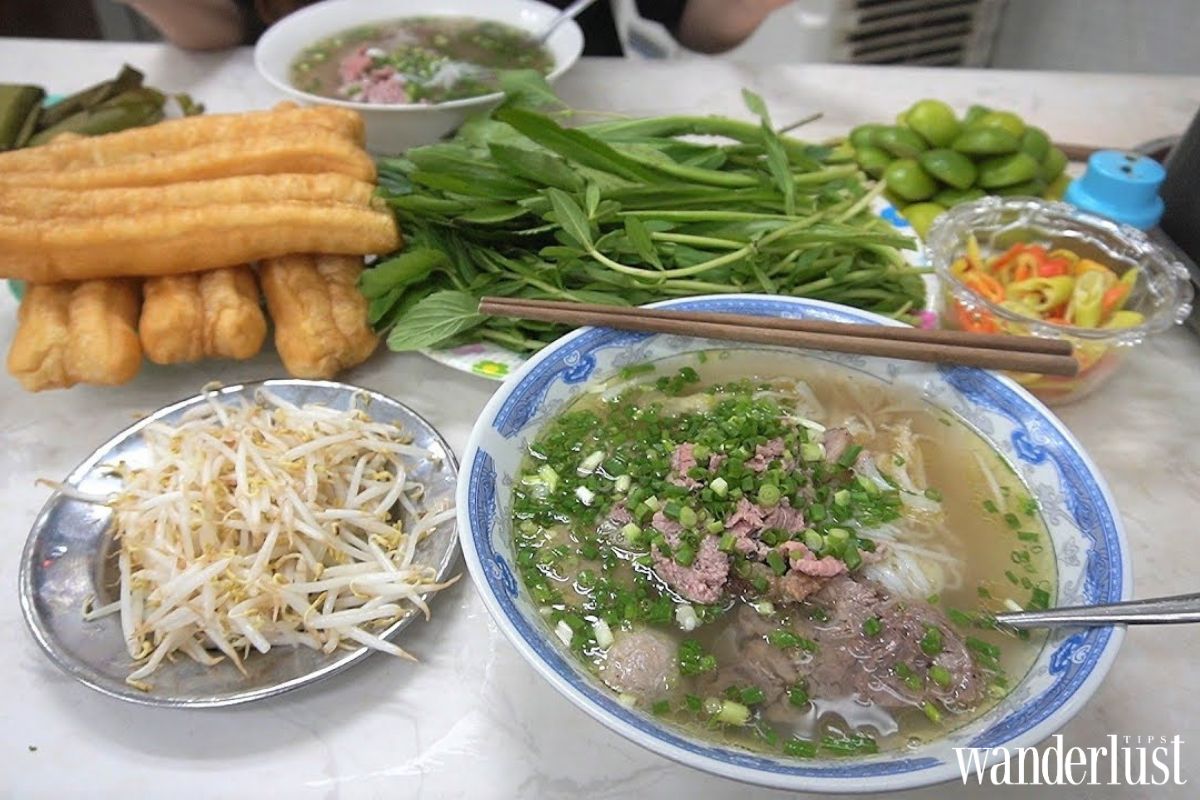
Pho Le: Fifty Years of Chinese Town Flavor
Pho Le, located on Nguyen Trai Street in District 5 (Ho Chi Minh City, Vietnam) where many Chinese immigrants dwell, combines the flavors of Chinese Town with traditional Southern Pho. As a result, signs for Pho Le are accessible in three languages: Vietnamese, English, and Chinese. The proprietor of Pho Le is a native Cantonese. Another intriguing element is that, despite the fact that Pho Le has a huge space, the food truck remains rustic and simple. It appeared to be a small street vendor’s cart with uppercase letters. A plethora of brilliant red peppers hang from the cart, captivating the attention. This cart is also the distinguishing element that has helped Pho Le become a household name throughout the years.
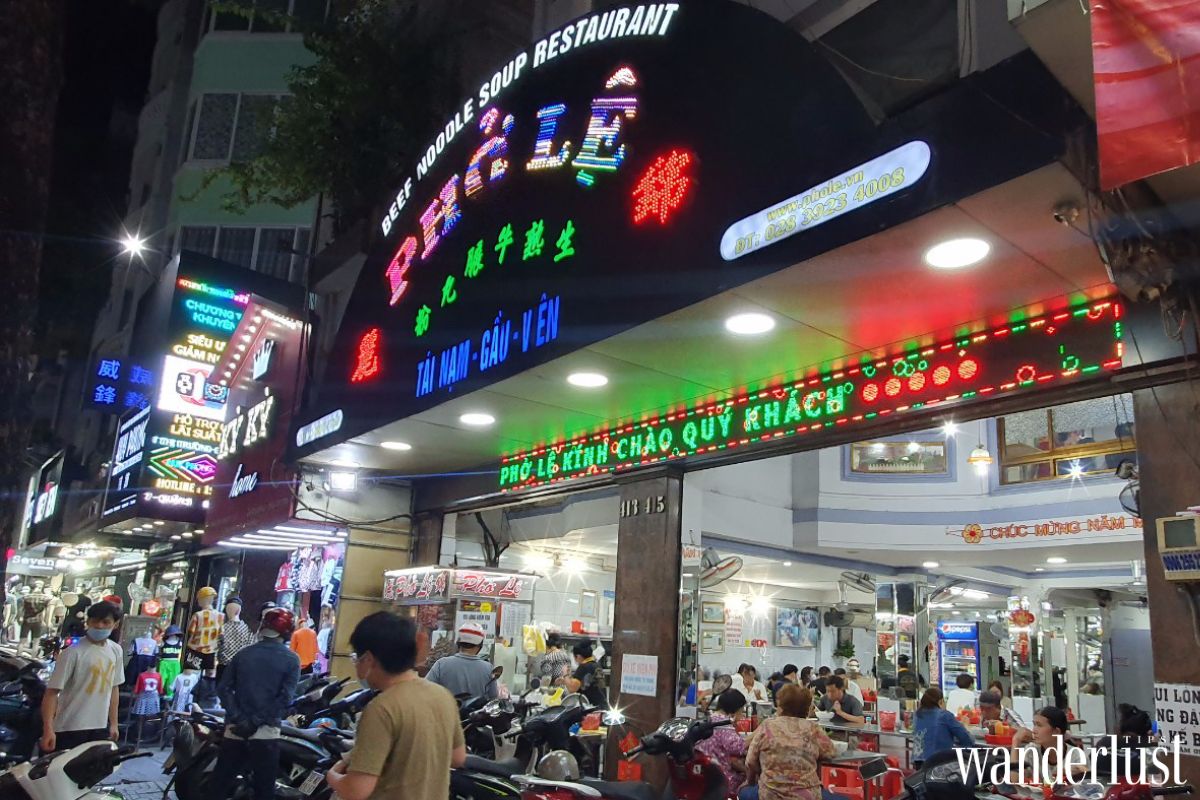
Like many other pho restaurants, Pho Le’s mixed bowl includes noodle soup, rare, encrusted, bucket, tendon, and ball. Noodles and associated meats are plentiful. Even if customers’ appetites are mild, it is difficult not to order a bowl of pho here. The beef is fresh, tender, and tasty, with very large beef balls divided into several pieces. Pho is cooked just right, so it retains some roughness. Although it is seasoned according to the sweet flavor of the South, the broth at Pho Le has the fat of the golden floating fat layer, making the bowl of pho even more wonderful. The great food, the spacious, clean environment, and the restaurant’s long-standing reputation have enticed many guests to return. It does not have to have an exceptional or unique flavor; Pho Le captures the hearts of food-loving customers by executing such simple things.
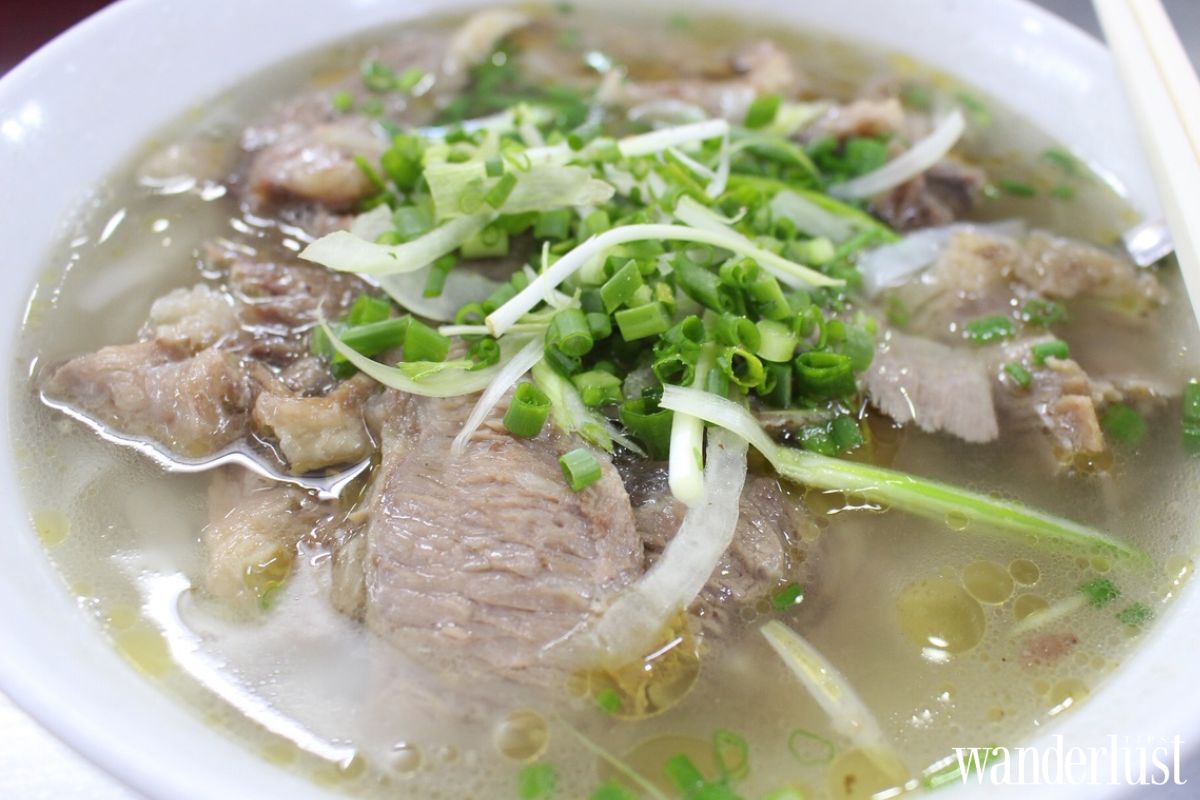
Pho Minh: From street vendor to Pho eatery, has been around for over 70 years
No one would have guessed that a renowned pho eatery in Saigon would have such a rustic and modest appearance tucked down in a narrow lane on Pasteur Street, District 1. Since its humble beginnings as a street vendor cart in 1942, Pho Minh has had a special place in the hearts of Saigon diners. To avoid commercialization, Pho Minh’s area contains only nine sets of wooden tables and chairs with extremely minimal décor, giving customers the impression of coming home. The “Pho Minh” signboard has retained its vintage appearance over the years, making the brand more visible. Despite many hardships and tribulations, including having to briefly close and relocate, Pho Minh is asserting its brand in Saigon’s “Pho market” with increasing vigour.
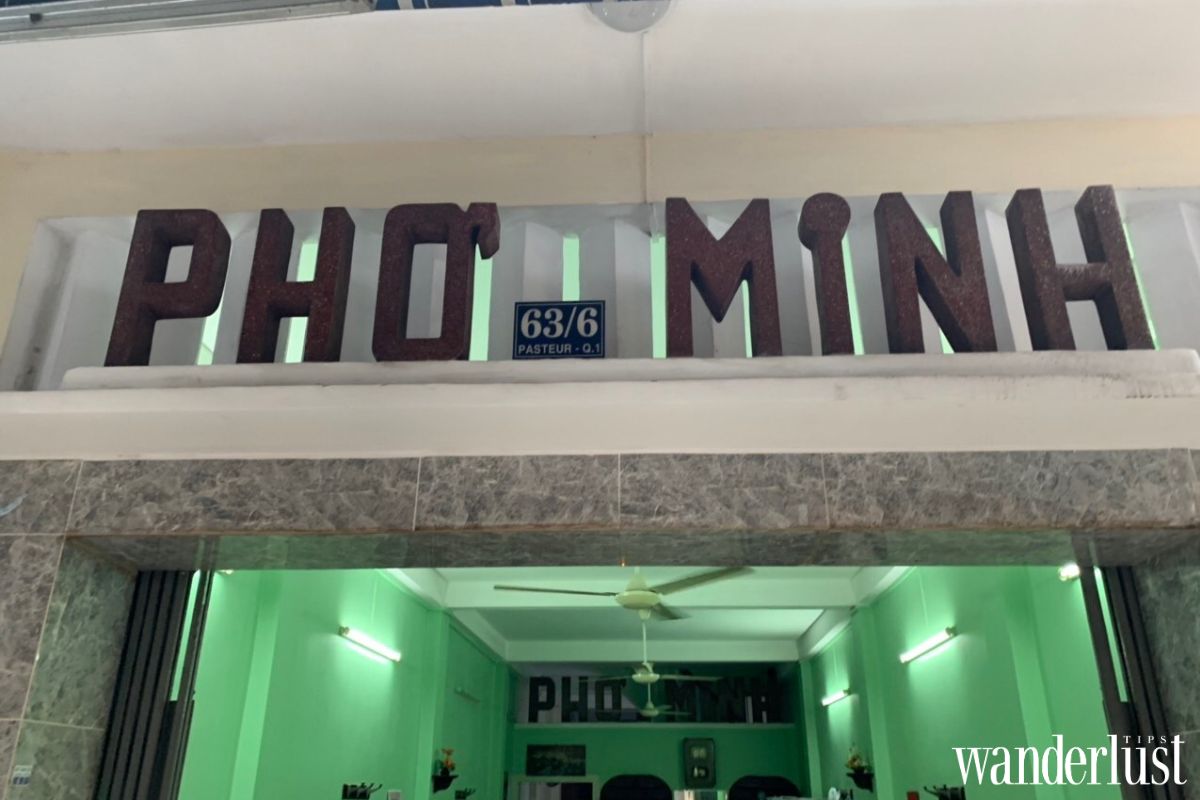
There is no Pho truck, as there are at many other restaurants; instead, when you arrive at Pho Minh, you will see an old lady working hard to prepare each bowl of Pho above a small kitchen with 1-2 kitchen assistants. They are all family members, descendants of Mr. Minh, the shop’s founding proprietor. As a Northern family, the bowl of Pho here also has a Northern flavor and is slightly affected by Southern Pho. Pho broth has a distinct sweet flavor since only ginger and lemongrass are utilized, rather than anise, cinnamon, fenugreek, etc. To meet the needs of Southerners, the business offers a wide variety of meats such as rare, encrusted, tendon, bucket, and so on. A bowl of Pho Minh was typically accompanied by both bean sprouts and raw veggies. Many people link Pho Minh with their childhood. Some were taken to eat Pho Minh by their parents as children and grew up taking their children and grandkids to the restaurant to enjoy it. For more than 70 years, not only local customers but also overseas Vietnamese and foreigners have known the renown of Pho Minh. Many expats who return to Vietnam must seek out a bowl of Pho Minh because they miss the flavor of Vietnamese Pho. Customers still flock to Pho Minh because they adore the traditional values that have been passed down through generations, despite the fact that the price is deemed somewhat costly and the portion size is little compared to those who are large eaters.
